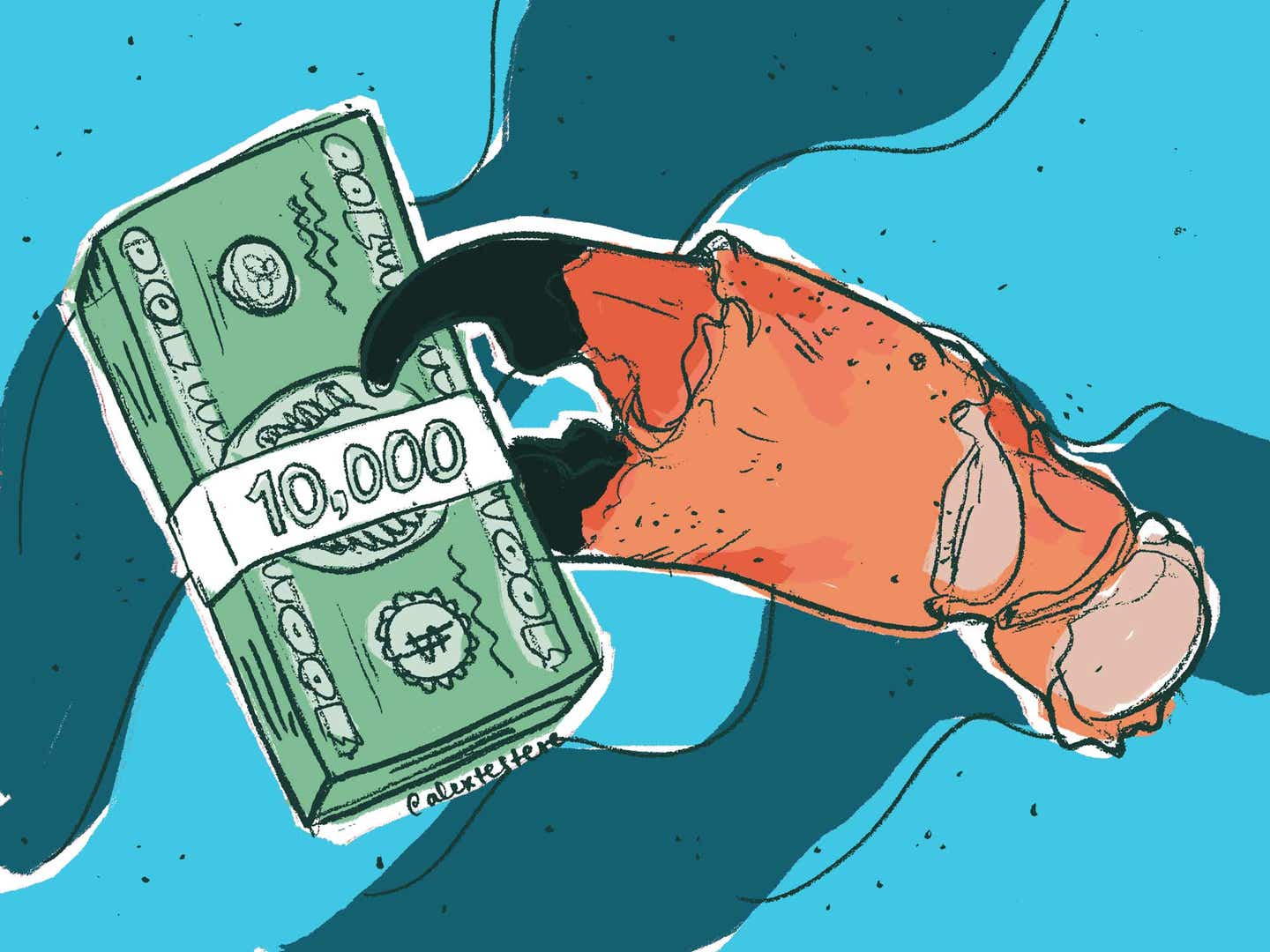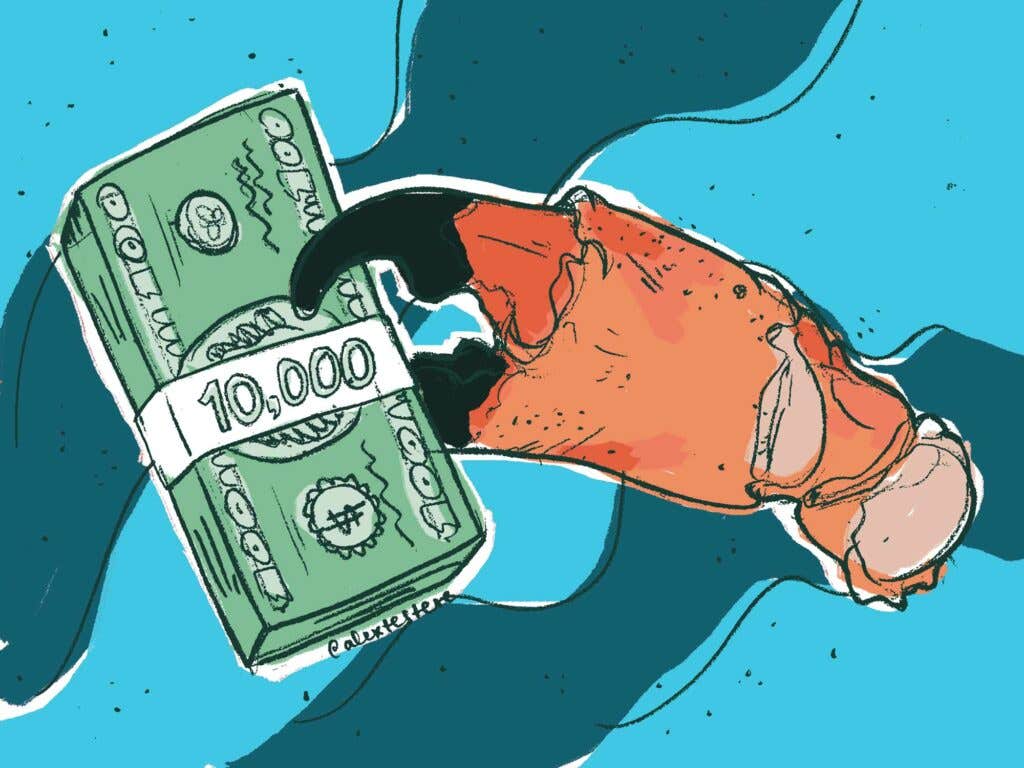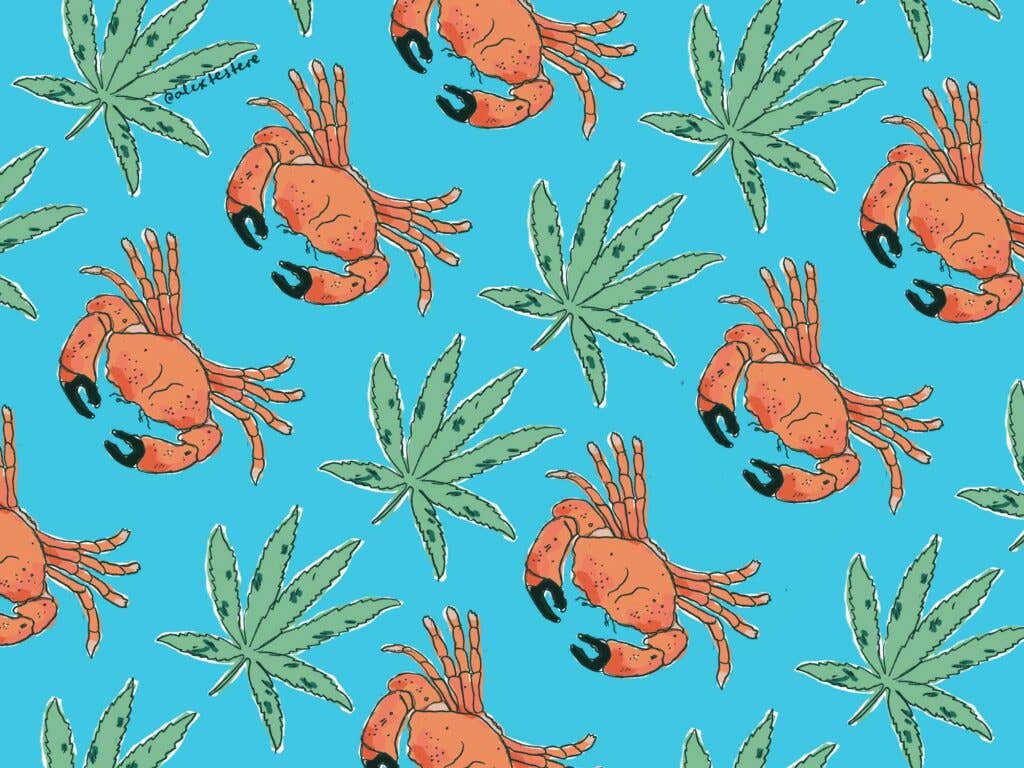
The Crab-Fishing Drug King of Everglades City
On a seafood pilgrimage to south Florida, Jamie Feldmar catches wind of drug-runners, false-bottom crab boats, and a tale so bizarre it could only be true. Maybe
Disclaimer: What I am about to tell you is all true...ish, though names have been changed to protect the guilty. I’ve fact-checked where possible, combing through newspaper archives to find evidence that supports the claims made within. But even now, months later, I still find myself questioning whether any of this was real, or if it was some kind of bizarro-world fever dream. So take everything in the account below with a grain of salt; treat it as my attempt to record a memory before it evaporates entirely.
Cruise control is a colloquialism, but it's also a very real setting on the convertible I'm driving down US 41, also known the Tamiami Trail, which connects Tampa and Miami by cutting straight across the Everglades. It's empty on the road, so I'm set at 75 and cruising, top down, through the 2,000 square miles of rivers, lakes, and mangrove forests that make up what writer and environmentalist Marjory Stoneman Douglas described as a "River of Grass." There's not much to see beyond blue and green, and the occasional billboard advertising airboat tours with guaranteed gator sightings!!! (Emphasis theirs.)
My unlikely companion is my mother, and we’re on our way to Everglades City, Florida, a tiny town on the edge of Everglades National Park, population 402. We happen to be visiting south Florida on the first day of stone crab season, and I’m on a mission to eat as many as possible, as close to the source as possible.
Stone crabs are gnarly bastards, and commercial crabbing is a tough gig. Big boxy traps are baited with pig feet, then strung out on lines and hauled in some 24 hours later, ideally filled with angry crustaceans whose claws are strong enough to cause serious damage to unlucky human fingers. Stone crabs aren’t killed when they’re caught; if their claws are large enough to meet state requirements, they’re ripped off by hand, and the newly-disarmed crab bodies are tossed back, where they will slowly regenerate new claws in the off-season.
The fresh “green” claws are kept in seawater, then brought to shore and cooked at 212 degrees for precisely eight minutes before immediately being chilled in cold water to prevent the meat from sticking to its shell. The next day, the claws are weighed and graded by size, then shipped off to restaurants and distributors around the country. Eventually, they find their way to customers like me, who pay a premium to greedily rip their sweet, meaty flesh from inside the rock-hard claws and dip it in honey-mustard sauce.
We’re en route to Everglades City because it is, according to the residents of Everglades City, the stone crab capital of the world. Dozens of crabbers are based there, supplying much of the country from October to May every year. Joe’s Crab Shack in Miami, arguably the most famous crab restaurant in the country, is the town’s biggest customer, and owns multiple crab houses there to ensure a steady supply.

Despite this illustrious reputation, Everglades City isn't much to look at. It's what a Yankee like me would call a one-horse town, a drive-by. Residents of south Florida and trivia buffs may have heard of it for other reasons; we'll get to that in a minute. Point is, I didn't know diddly-squat about the place except that it was filthy with stone crabs, which is how found ourselves at Triad Seafood, a rickety crab shack surrounded by funky-smelling traps on the muddy Barron River.
The start of stone crab season is kind of a big deal, and I’d called several restaurants only to discover that the first batch wasn’t yet ready, or worse, had already sold out. Triad was one of the few places in town with any left.
Mom and I are interlopers, and it shows. The middle-aged waitress eyes us suspiciously before granting us access to a rickety table with plastic chairs. The menu is printed on an 8.5 x 11 sheet of paper, but we barely look at the thing—we’re here for the stone crab special, listed by claw size on a dry-erase board, with a side of hushpuppies and coleslaw, please.
Two men are at the table adjacent to ours, smoking cigarettes and shooting the breeze over a platter of fried fish. They’re in their mid-50s, both with rawhide skin and shaggy hair, plus baseball caps and heavy working boots despite the 80-degree heat. They notice us. We smile politely but curtly, deferring to our place as both outsiders and unaccompanied women in this rough-around-the-edges seafood joint. We don’t want to talk to them—I can feel my mother’s mental ‘danger’ antenna picking up frequencies in the air. But the taller of the two comes over to us anyway.
“Y’all kin?” he asks, smiling.
No one talks like that where we’re from. People would ask if we were related, sure, but “kin” is a particular regional vernacular, and it catches us off-guard. “I was trying to figure out if you were sisters or mama-daughter,” he continues. We nod in agreement, yes, we are one of those things, and it’s clear he wants to keep talking.
“I’m 10th-generation Evergladesian, part Indian in my blood, and I can tell. I grew up here, went to high school right across the street, fished here all my life. Name’s Will Clarkson—they call me Captain Will—and I run these boat tours if y’all ever want to see the Glades with a real local,” he says, sliding a flimsy business card our way.
I’m relieved—okay, he’s just shilling his tours, no harm, no foul. I figure I should ask him about the stone crabs—how they’re caught, how they’re processed, and so forth, to see if Everglades City has fully earned its reputation. “I worked on crab boats for years,” says Clarkson, motioning to the pile of traps on the riverbank. “Let me show you how it works.” He walks me through the process, demonstrating with his hand how the crabs fall into the funnel-shaped top in search of food, then can’t get out. “It’s hard work, going out before sunrise, out there all day,” he says. His buddy laughs: “That’s why you quit doin’ it!” Clarkson tells us there are 90,000 traps in Everglades City, making it the largest producer in the U.S. Sounds right.
Our claws arrive back at the table and we figure that’s the end of our conversation. But Clarkson pulls up his chair and announces he’s going to show us how to get the most meat out of the claws. Sure, a tip from a local—this will be good for the story I’m already drafting in my head. He places the claw atop his open palm, then whacks it with the back of a spoon. The shell comes splintering off in big pieces, revealing a thick nugget of sweet, juicy meat. I thank him for his service.
Clarkson pulls up a chair. “You ladies know anything about Everglades City in the ‘80s?” he asks. I shrug. My mom, however, apparently does. “I remember reading something about the War on Drugs,” she says. This is the right answer. Clarkson leans in close.
“I have $10 million in movie rights on my name,” he says. “I ran this town. I had condos, planes, a recording studio in Nashville. I had 14 kids—not all of them biological, maybe, but I took them in as my own and supported them. Not bad for a sixth-grade flunkout,” he goes on, slapping his thigh.
It all started, Clarkson continues, when he was 16. His daddy, a fisherman, was too sick to go out on the water, and so Clarkson, who had indeed been kicked out of school in junior high for setting off cherry bombs in the toilet, was out looking for mullet in his stead. As a 10th-generation Gladesman, he knew every curve in the mangroves like the lines on his palm—all the best spots to fish, to take shortcuts through the tall grass, to catch some shade under the unrelenting midday sun.
One day, young Clarkson was out on the boat when a well-dressed man with the nicest sunglasses Clarkson had ever seen motored up to him in a little dinghy. “I need your boat,” said the fancy man. “Well, I need my boat too,” said Clarkson. “If I don’t catch enough fish to make at least $100, my daddy will kill me.” The man laughed. “If you give me your boat for 24 hours, I promise I’ll give you enough money that your daddy won’t even remember the fish.” And so, 24 hours and a manila envelope fat with Benjamins later, Clarkson was officially in the drug-running business.

It worked like this, basically: The big importers were in Miami. The marijuana was from Jamaica and Colombia, loaded onto big ships just waiting to be picked up in the Gulf of Mexico. The importers needed guys like Clarkson, who had boats and knew the knotty waterways in their blood, to run the product between the motherships and back to shore under cover of night. They did it with false-bottomed fishing boats with fast motors—on a good trip, says Clarkson, he could make it to a pickup in Jamaica and back again in 24 hours. He didn't get involved in the sales or distribution of the drugs, but he did get his brothers, cousins and father in on the transportation racket.
Everyone in town knew about it. Clarkson (whose family name is actually Davis changed his middle name to his surname; more on that in a minute) was far from the only guy the slick-talking dealer had approached. One local policeman estimated that "250 to 300 of the 534 village residents fish for a living, with 'half, maybe three-quarters'' of them suspected of taking part in the illegal enterprise," reported one 1982 New York Times article about the burgeoning Everglades City drug trade.
“But I used my money for good,” insists Clarkson—who is loudly talking at the restaurant in plain view of anyone who cares to listen—“I made sure the church was taken care of, the hospitals. When my neighbor hit hard times, he wanted in on the business, and I told him, you don’t want to get involved in this stuff, but here’s $40,000. Just gave it to him, no questions asked.”
The waitress walks by and rolls her eyes at Clarkson’s friend, who has returned to his table to continue chain smoking, alone. My mother and I are glued to our seats, unsure of what to make of all this. Is it complete bullshit? It has to be bullshit. There is no way what this man is saying is true, but there’s no easy way for us to get out of his story, plus, it’s pretty entertaining (albeit slightly terrifying). And so he continues rattling off a list of his material goods and properties, boasting about “never hurting nobody,” and waxing nostalgic for the (many) women he once knew and loved.
Of course, all good things must come to an end, and Clarkson tells us, fleetingly, of getting caught. He’s vague with the details of the bust itself, perhaps viewing it as a personal failure he didn’t want to dwell on. He talks about sacrificing himself so his brothers could get less time, and of transferring his many assets to his many children so his exes couldn’t bleed him dry. Ultimately, he did 12 years behind bars, in federal, state and county jail for tax evasion.
He came home after that, back to Everglades City, where everyone knew what had happened and no one talked about it. He got married, then divorced. He had some more kids. He found religion—not quite God—but a spirituality of some sort, that allowed him to never have a bad day, to let things pass through him without leaving a scar. He took a guest stint on the Netflix series “Chasing Monsters,” about fishing ugly sea creatures in the Everglades. Eventually, he started his airboat operation.
At this point, we’ve finished our crabs, and, having run through polite disbelief, shock, and awe, we’ve just about run out of ways to react to Clarkson’s tale. We’ve been at Triad for nearly two hours and we’ve gotta get out of there. Perhaps sensing our agitation, Clarkson leaves our table by staring directly into my eyes, announcing, somewhat menacingly, that he can see through me, and telling us to check out his boat tours when we’re back in town. Shaken, we skedaddle when he’s in the bathroom, not wanting him to see our license plate number.

Back on the highway, we try to process. I don't believe anything Clarkson said, but start furiously searching "Everglades City + drug smuggling + Will Clarkson Davis," just to see what happens. It doesn't take long for results to start popping up: "Everglades City Shifts from Fishing to Drugs," reads one 1982 headline; in 1983 and 1984, the DEA executed two highly-publicized predawn raids in the tiny town as part of "Operation Everglades," which lead to the seizure of 580,000 pounds of marijuana with an estimated street value of more than $252 million, and the arrest of nearly 80% of the adult male population of Everglades City. One article details the Davis brothers in particular, noting that agents seized six parcels of land belonging to the boys: Collier County, land in Tennessee, two condos, two planes, and four boats. I exhale slowly: He wasn't lying.
At least not entirely.
Further reading reveals that there’s a long history of smuggling in Everglades City, dating to the turn of the 20th century, when residents smuggled in endangered animals, then later rum-running in the Prohibition era, and finally marijuana, in the ‘70s and ‘80s, as the National Park Service enacted ever-stricter laws on commercial fishing, the previous mainstay of the local economy.
So it’s far from a black-and-white situation: a working-class town in the middle of nowhere gets squeezed out of its major source of income; tight-knit locals turn to illegal activity to survive; everyone knows, but no one talks. Gives a deeper meaning to the word “kin,” when you think about it.
Keep Reading
Continue to Next Story










